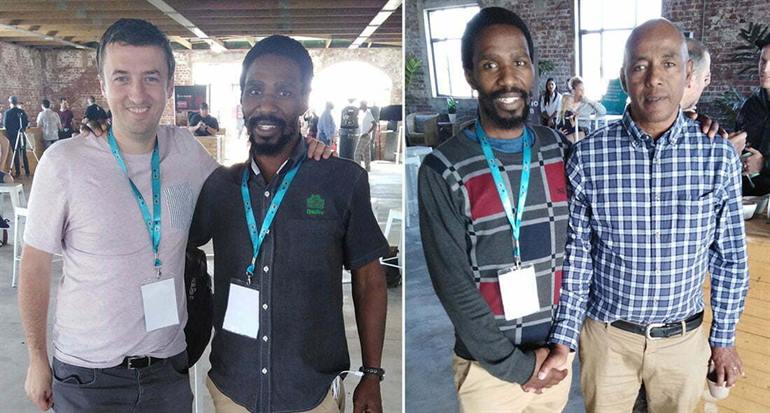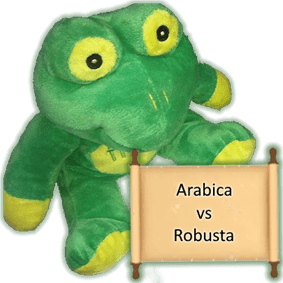In this newsletter, we describe the honey process, summarise Mzukisi’s visit to Durban and mention a few coffees that have been released (and those that have ended). Plus, a new service offering. It is quite a long read, so grab a cup of Quaffee and set aside 20 minutes to read.
Honey Process
Our last two newsletters covered natural and wet processing. These are the most typical coffee processing methods. Natural allows natural drying of coffee cherries. If done correctly, it uses the natural fermentation of the complete coffee cherry to expose the pip (or bean). Washed removes the fruit, then typically ferments the remaining coffee pulp away from the pip underwater.
The Honey process can also be called pulp-natural or semi-natural. Honey processed coffee is typically associated with smaller lots, with coffee being dried generally in the sun. Pulp-natural coffees are large commercial lots and often dried initially in the sun, after which drying is often completed in an automated drier.
Honey-processing of coffee started off as a way to dry coffees quicker. By removing the skin from the fruit pulp would dry sooner. Getting coffee to market quicker was the objective. Honey-processed coffees were limited initially to water-scarce areas (at least during harvest). The fact that these coffees then had interesting cup-quality and flavour notes promoted the method to other areas.
Honey processed coffees use depulping machines (or demucilaging machines) that are calibrated to remove the skin from the fruit, as well as some of the fruit pulp (mucilage).
Black, red, yellow and white
It has become common that there are difference names associated to honeys.:
- Sometimes this is linked to the amount of mucilage removed. With black, red, yellow and white honeys removing more of the mucilage. Each level producing a different name with black the most pulp and white the least.
- Other times it is linked to the drying times for each honey processed coffee, with black being the longest and white the shortest. Perhaps the fact that the more pulp there is the longer the coffee will take to dry explains this.
- Also we have heard the terms associated to how long the pulp has already spent drying. Here white is new and black is almost ready.
As you can see there is no clear definition. What is important is that when these descriptions are presented, to be aware it is linked to the final taste.

A quick note on fruit pulp: In our experience at origin, we have found the more fruit pulp on the cherry, the tastier the final coffee in the cup. A healthier fruit tree produces more. Since fruit is essentially food to attract animals to free their children from the fruit, should the fruit fall to the ground, then more fruit equals more compost material for the baby seed. A healthier mother plant produces a healthier fruit and baby. This has a scientific base since more fruit means more sucrose and fatty acids in the fruit, an important consideration when factoring in how micro yeasts act on the fruit pulp.
Back to honey processing. Once the determined amount of fruit pulp is removed, the resulting sticky (like honey) fruit is laid out either on a patio or, preferably, raised beds. For well-processed honeys, fermenting fruit pulp is then tossed regularly.
Once the desired moisture level of the seed is achieved (10-12%) the coffee seed is removed from its drying table (or patio). The rest of the processing then occurs as with naturals.
Did you enjoy reading this, and would you like us to cover more processes? There are several lesser-known, like wet-milled, monsoon and biologically processed. Send us feedback here…
Mzukisi’s visit to KZN
The Coffee Magazine has introduced a coffee festival. Happening once a year in Durban during July. At the coffee festival, international and local coffee superstars present ideas, have panel discussions and open the floor to questions.
While coffee people typically attend the festival, there has been a welcoming of serious coffee lovers to the festival called Coffee Creative.
Mzukisi’s feedback from Coffee Creative

This year Mzukisi went by himself to the festival. It was the first time Mzukisi had caught an aeroplane by himself. He did travel with Warren (and Frog Quaffer) to Diedrich roasters and Seattle in 2012, but this was his first-time solo.
At the festival, Mzukisi found that he knew many people and enjoyed participating in the discussions. He also cupped some new coffees with other roasters and green suppliers. We have already added one of these coffees to our offering.
Mzukisi met Tesfaye from Ethiopian region Guji (pictured on the right) that Frog Quaffer met in 2016. He also met Colin Harmon (pictured on the left), founder of 3fe in Dublin (a bucket list coffee shop) and the author of “What I know about running coffee shops”
Mzukisi enjoyed listening to Tesfaye’s story. Tasked by the Ethiopian government to rehabilitate a large section of a natural forest that had burnt down, he worked to restore the forest to its previous glory. Once done, he asked the government what their plans were for the land. They asked him what he would do, and he said it was perfect for growing coffee in the shade of the forest. They gave him the go-ahead to do that. Nis coffee is now so oversubscribed that he has to buy in coffees from other farmers in the area to keep up with the demand.
Tesfaye has setup 2 processing stations in Guji. One specialises in natural and honey coffees, one washed coffee. Coffees from Guji we have offered before, typically they are sweet and fruity. We keen to source some of Tesfaye’s coffee. However, as in 2016, his coffees are almost sold before they are picked. We can only hope to get an allocation from this year’s crop (they anticipate the coffee picking to start November this year).
Besides meeting Tesfaye and hearing his story, Mzukisi attended numerous industry discussions. He found a difference in opinions interesting, finding it noteworthy how other roasters approach their roasting. Mzukisi feels that the model that we have settled on using (based on Stephen Diedrich’s example) is a good one. Stephen always stressed that taste is King, and the science is fascinating, but unless it transfers to the cup, it does not help. As a member of the Quaffee team, he knows we work hard to find and roast coffee we like to drink. We simply hope others out there may like it too.
Mzukisi also played with some new equipment. Including a few manual brewers, but told us he still likes the V60 and AeroPress more.
During one of the panel discussions around green coffee, Mzukisi heard how the green buyers stress that roasters must check lot numbers to make sure they are what they were sold and also, to make sure you check their moisture levels. Tesfaye asked the industry to focus on quality rather than just making money.
Mzukisi’s visit to Beaver Creek

A visit to Beaver Creek coffee farm is a bucket list item for anyone that finds themselves in KZN. With Mzukisi 2 hours away, we organised that Dylan from Beaver Creek would collect Mzukisi (actually Dylan was at the coffee festival, so he just had to take him home J).
Mzukisi really enjoyed the experience of visiting the farm and spending a whole morning there. The first time he has seen a productive coffee tree and tasted the coffee cherries. He even ate a Robusta cherry and said it was quite sweet. He picked, de-pulped and laid out coffee to dry. Once done, he then graded the coffee by size, seeing the process from picking to packing in one go.
After that, he did some sample roasting with Dylan. Dylan was super accommodating, especially since it was his daughter’s birthday. Mzukisi brought the coffee he roasted back, which we tasted. We are hoping to offer something of interest from Beaver Creek soon.
Even though Mzukisi was nervous to go alone to Durban (his first time visiting the city), he found he knew many people in the industry and they were very welcoming. The highlight of the long weekend was his visit to Beaver Creek.
New Coffees
While we have seen the end of Gishubi (we loved this Long Miles coffee, and it is already missed), we are hoping to secure some of this year’s crop – but that will only get here next year. Also coming to an end is the Honduran Erapuca. Moreover, the Solok it to be replaced with a new Indonesian coffee.
The new coffees released are:
- Tanzanian natural peaberry called Kwanza, read more here… This coffee replaced the Gishubi in the Bunna blend.
- Peruvian washed Caturra called El Diamante, read more here… Replacing Honduran Erapuca in the Wildly Organic blend.
Both these coffees are tasty and are already selling well
Subscription coffee
We have always offered to those that want it, a system to track their coffee and send an email should we believe they are running low. We have now introduced an option to have coffee automatically delivered to you. The options are weekly, fortnightly and monthly. You are in control; you can choose to receive a random specialty single origin or one of the blends it is up to you.
We have added this option so that those that want to try something different can do so at a set price. Alternatively, those that don’t want to remember to order can elect to get coffee automatically.
The best part is that there is no contract, and we will also email you before the coffee is sent so that you can change your mind.
We have a full webpage dedicated to this option read more here… or from the website select offerings->services->coffee subscriptions.



